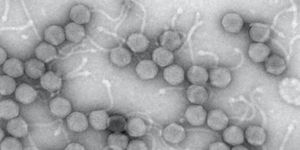Bioengineered Lung Successfully Grown and Transplanted
The successful engineering of synthetic organs has long been a goal in biomedical research, but many organs are incredibly complex structures that contain a variety of different cell types, which then have to be organized in very specific ways for proper organ function. Scientists have been plugging away at this work for years, however, and progress is being made. A new paper in Science Translational Medicine describes the successful effort to grow and transplant a synthetic lung into a large animal model.
"The number of people who have developed severe lung injuries has increased worldwide, while the number of available transplantable organs have decreased," said Joaquin Cortiella, professor of pediatric anesthesia.
"Our ultimate goal is to eventually provide new options for the many people awaiting a transplant," said Joan Nichols, professor of internal medicine and associate director of the Galveston National Laboratory at UTMB.
Human lungs were created in the laboratory for the first time in 2014 at the University of Texas Medical Branch at Galveston, by Cortiella and Nichols. They continued their work, which involved figuring out how to lay the foundations for the lung's structure. To do so, they took a fully formed lung from an animal and stripped it of all the proteins except for the scaffolding. The result was a lung shape made from lung-specific proteins.
A single cell was taken from a study animal, a pig, to grow a matching lung on the scaffold. The cell was expanded to create a pool of matched cells, and they applied them to the scaffolding along with nutrients. After thirty days in a bioreactor, the engineered lungs were ready to be transplanted. To assess the impact of the transplant on the animal models, the investigators euthanized he animals at ten hours, two weeks, a month and two months following the transplant.
The new lungs did well, and they established the network of blood vessels they need. "We saw no signs of pulmonary edema, which is usually a sign of the vasculature not being mature enough," said Nichols and Cortiella. "The bioengineered lungs continued to develop post-transplant without any infusions of growth factors, the body provided all of the building blocks that the new lungs needed."
While the necessary blood flow was established, the functionality of the transplanted lung has to be improved. "We do know that the animals had 100 percent oxygen saturation, as they had one normal functioning lung," said Cortiella. "Even after two months, the bioengineered lung was not yet mature enough for us to stop the animal from breathing on the normal lung and switch to just the bioengineered lung."
The team is continuing this work and is taking aim at gas exchange next. They believe that these lungs can be grown for human transplant within five or ten years.
"It has taken a lot of heart and 15 years of research to get us this far. Our team has done something incredible with a ridiculously small budget and an amazingly dedicated group of people," Nichols and Cortiella added.
Sources: MedicalXpress, Science Translational Medicine








